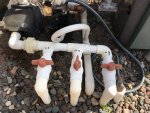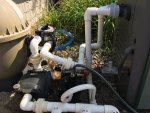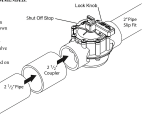- Jun 15, 2019
- 202
- Pool Size
- 22000
- Surface
- Vinyl
- Chlorine
- Salt Water Generator
- SWG Type
- Pentair Intellichlor IC-40
I think I have water chemistry under control, so it’s time I get into my equipment more 
I definitely have a suction side leak in the valve labeled “md”. When closing for the winter, we closed the md valve and air was coming out the main drain when blowing out the skimmer lines. First, what type of valve do I have and, second, what should I replace them with?
I’m not much of a DIY type, but I’ve heard PVC isn’t too bad and might be willing to tackle it if the TPF community encourages me to! Any good videos anyone can recommend? Are there any concerns with how the lines are laid out? It looks like I don’t have a lot of room for mistakes here.
Thanks for any help and advice!
I definitely have a suction side leak in the valve labeled “md”. When closing for the winter, we closed the md valve and air was coming out the main drain when blowing out the skimmer lines. First, what type of valve do I have and, second, what should I replace them with?
I’m not much of a DIY type, but I’ve heard PVC isn’t too bad and might be willing to tackle it if the TPF community encourages me to! Any good videos anyone can recommend? Are there any concerns with how the lines are laid out? It looks like I don’t have a lot of room for mistakes here.
Thanks for any help and advice!







